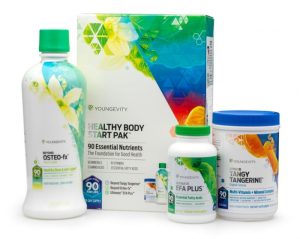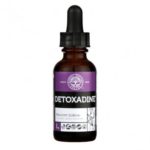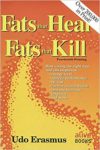By Ben Fuchs | Pharmacist Ben
Get ready aficionados of iodine! In the same way that vitamin D caught the supplementing world by storm in the late 1990’s and early 2000’s, the 53rd element is poised to become the latest darling of the world of nutrition.
Although we’ve known about the purple mineral (the term “iodine” is derived from the Greek word for violet)) for over 200 years and iodine’s importance as an essential element has been recognized since the late 19th century, it’s only been in the last few years that the iodine’s astounding versatility and significance has become apparent. Perhaps its because of the crippled Japanese nuclear plant at Fukushima (according to experts using iodine can provide protection from radiation) or maybe it’s the seeming epidemic of hypothyroidism (even the nutritionally ignorant are aware of iodine’s relationship to thyroid health), but for whatever reason more and more people are becoming aware of the significance and health relevance of this important mineral.
 Although full blown deficiencies are rare, iodine, which even lay people recognize as being an essential nutrient for the thyroid, is becoming more and more scarce in the American diet. According to Dr. Laura Pizzorno, writing in the journal Longevity Medicine Review, iodine intake in the United States has been decreasing since the 1970’s and much of the US population may be deficient. Dr. Pizzorno blames changes in American dietary habits and reduced intake of iodized salt, and even mentions discrepancies in label claims on salt containers and the condiment’s actual content.
Although full blown deficiencies are rare, iodine, which even lay people recognize as being an essential nutrient for the thyroid, is becoming more and more scarce in the American diet. According to Dr. Laura Pizzorno, writing in the journal Longevity Medicine Review, iodine intake in the United States has been decreasing since the 1970’s and much of the US population may be deficient. Dr. Pizzorno blames changes in American dietary habits and reduced intake of iodized salt, and even mentions discrepancies in label claims on salt containers and the condiment’s actual content.
With the exception of seafood, iodine is not found in great abundance in many foods and many iodine experts believe that we could all use more of the stuff than we’re getting, and that medical professionals recommend. The RDA for iodine is around 150 mcg but according to Doctor David Brownstein, writing in his classic go-to reference source “Iodine, Why You Need It and Why You Can’t Live Without It”, we should probably be getting a 12.5 mg day, nearly 100 times the government recommended dose. And given iodine’s multi-functionality and non-toxicity, it’s hard to argue his point.
In addition to being protective against radiation toxicity such as the kind being spewed out by the crippled Fukushima nuclear plant and its critical importance for thyroid and thyroid hormone effectiveness, iodine plays a key role in the development of the fetal and infant brain. Around the world iodine deficiency is a leading cause of mental retardation in infants. And according to a British study of 1040 pregnant moms, who were iodine deficient, had children with lower IQs and reading levels.
And there’s more—although most folks could tell you that iodine is important for the thyroid gland, it hardly recognizes that other hormone secreting glandular structures need it too. It can be helpful for the adrenals and the pancreas. And, according to Dr. David Howenstine, iodine supplementation “resolves nearly every case of breast cysts”. Dr. Howenstine writes that iodine can heal ovarian and skin cysts too (20 percent of the body’s iodine stores are in the skin and one of the signs of iodine deficiency is dry skin). Muscles may benefit, ie: muscular pain and fibromyalgia are associated with iodine deficiency.
The most commonly used iodine supplement is Lugol’s solution which is a blend of two forms of iodine combined with potassium. This formulation is available in a tablet form as well. Some researchers believe that absorption of the liquid or tablet forms of these blended iodines may not be efficient. They recommend another type of iodine called “Nascent Iodine” which is an electrically active form that has been separated from other elements (e.g. potassium), and from other iodine atoms as well. The net result of this electrification is a little piece of free element that can be called “atomic” iodine. Nascent or “atomic” iodine is more easily recognized and usable by the body than other forms and thus its superior absorption and utilization.
http://www.morungexpress.com/public_discourse_public_space/104893.html


 Some of these functional proteins require calcium for their activation. They are said to be calcium-dependent-proteins and they play a critical part in the operation of many important functions in the body. These proteins are interestingly shaped with little hooks on them, chemical hooks, and molecular hooks. Via these little biochemical appendages they ‘fish” for calcium. Chemical hooks are an iconic example of how shape affects the function and properties and features of various molecules. Without calcium-trapping hooks these vital and key proteins are as useless as any fishing pole & line would be without its hook. A fishing pole & line without a hook isn’t going to catch many fish and a calcium-dependent-protein without a hook isn’t going to catch much calcium. No hooks on these chemicals means these chemicals are going without calcium. And no calcium on these chemicals means these chemicals are essentially neutered. They’re inactive. These are chemicals that contract muscles, keep your heart healthy, and help clean the blood among other roles. In fact almost everything a cell does is somehow related to these proteins and their chemical hooks and their ability to “catch” calcium.
Some of these functional proteins require calcium for their activation. They are said to be calcium-dependent-proteins and they play a critical part in the operation of many important functions in the body. These proteins are interestingly shaped with little hooks on them, chemical hooks, and molecular hooks. Via these little biochemical appendages they ‘fish” for calcium. Chemical hooks are an iconic example of how shape affects the function and properties and features of various molecules. Without calcium-trapping hooks these vital and key proteins are as useless as any fishing pole & line would be without its hook. A fishing pole & line without a hook isn’t going to catch many fish and a calcium-dependent-protein without a hook isn’t going to catch much calcium. No hooks on these chemicals means these chemicals are going without calcium. And no calcium on these chemicals means these chemicals are essentially neutered. They’re inactive. These are chemicals that contract muscles, keep your heart healthy, and help clean the blood among other roles. In fact almost everything a cell does is somehow related to these proteins and their chemical hooks and their ability to “catch” calcium. The Taiwanese scientists studied 2,658 pregnant women who were exposed to topical corticosteroids and compared them to 7,246 pregnant women who were not exposed. They concluded that “this study reassuringly showed no associations of maternal topical corticosteroid exposure with orofacial cleft, preterm delivery (or) fetal death…”
The Taiwanese scientists studied 2,658 pregnant women who were exposed to topical corticosteroids and compared them to 7,246 pregnant women who were not exposed. They concluded that “this study reassuringly showed no associations of maternal topical corticosteroid exposure with orofacial cleft, preterm delivery (or) fetal death…”









